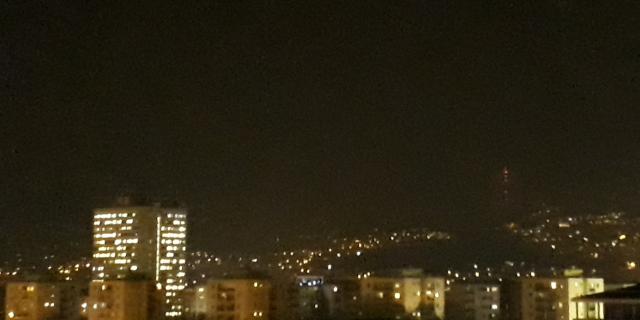Take a random walk

Do you ache for entropic extravaganza? Does your morbid curiosity towards chance long to be tickled just as much as your toes? Maybe you could try taking a stochastic stroll, a fickle flight, a random roam, or in other words, a die for a walk.
Exit your dwelling with a six-sided die in hand. At forks, roll and take the modulus by two. At crossroads, do the same by three.Stated like that, the concept itself is simple enough. It’s at the edge cases where it starts to fray into more complex, particular rules that you’ll end up inventing for yourself, considering things such as:
- do you assign probabilities to each direction equally?
- do you have some mechanism in place to prevent loops?
- do you avoid rolls that would take you home too quickly?
- do you stash rolls ahead of time, or roll right before junctions?
- how do you decide when to turn back?
A welcome side effect of forcing yourself to adhere to each roll (within reason) is the miriad of strange states they can put your mind into. Picking the uncomfortable option you otherwise wouldn’t have can cause you to be exposed to completely different sensory landscapes, not just letting you, but forcing you to wander, happening upon all sorts of cerebral corners.
Strangely enough, one of the first things I realized was that I did not take my die for a walk, it was really more like it happened the other way around. Below, I’ll try to make some connections to relevant topics. Aside from that, I wish you good luck on your divergent dérive!
Coin flips and affective reactions
There’s this phenomenon that you might have heard people advise you to exploit: when presented with a choice, if you are really unsure which option to take, convince yourself to put it up to chance. After feeling like you are locked in to that future, you’ll usually find out which option you are more comfortable with.
After a quick search, I found a paper that suggests the following.
“[…] decision-making aids function as catalysts that strengthen feelings. Out of all possible options, the catalyst suggests a choice, which is not binding, but nevertheless can feel very real. As a result, individuals may imagine the decision options more vividly, which in turn elicits stronger positive or negative affective reactions. These positive and negative reactions can then be helpful in clarifying one’s preferences and knowing which option one wants to choose.”
In the case of random walks, I’ve found that going down paths that I had no strong feelings about, and taking junctions that I usually ignored because of their topographic discomfort made me think about why I feel about each of them the way I do.
Psychogeography
Psychogeography is the exploration of urban environments that emphasizes interpersonal connections to places and arbitrary routes. It was developed by members of the Letterist International and Situationist International, which were revolutionary groups influenced by Marxist and anarchist theory as well as the attitudes and methods of Dadaists and Surrealists. (Wikipedia)
The dérive is one of the main Situationist practices, a method of drifting through space to explore how the city is constructed, as well as how it makes us feel. Guy Debord defined the dérive as “a mode of experimental behavior linked to the conditions of urban society: a technique of rapid passage through varied ambiances.”
As the dérive’s goals include “studying the terrain of the city, and emotional disorientation”, it seems like letting chance decide where to go next could help one to move towards those goals. There is an aspect of the dérive that seeks to explore how we feel about these spaces (“let themselves be drawn by the attractions of the terrain and the encounters they find there…”) that may not play well with randomness. One way to remedy this could be to let attraction overrule the rolls of the die if it is strong enough. After all, it would be ironic to almost stumble upon a place that looked like it could be interesting from afar, but not explore it because of some silly rules.
Fluxus research
Fluxus was an international, interdisciplinary community of artists, composers, designers, and poets during the 1960s and 1970s who engaged in experimental art performances which emphasized the artistic process over the finished product. Fluxus is known for experimental contributions to different artistic media and disciplines and for generating new art forms. (Wikipedia)
If you visit the fluxus portal, you will find their perspective on the broader concept instead of the more historical and art-focused one on Wikipedia. The most obvious difference is that most people involved with fluxus think of it less as a type of art, and more as a creative force.
The fluxus project I happened upon first was doors I touched today by FLUXUS Midwest. It seems as endearing as it is insightful. Anyways, I wonder what fluxus people would think of random walks.
Diverging timelines
Like at least two to three people before you or me (read: almost everyone), you may have contemplated branching timelines and multiple universes. That’s all well and good, but aside from visiting those timelines however deeply your imagination will take you, how do you actually live through one? We’ll, I guess you just go on living, make some choices, or listen to the butterflies cascading in the background, and you’ll end up in one of them.
While that is true, there are ways of making that process more visceral. It seems that presenting yourself with options, but deciding ahead of time to choose between them randomly, and then abiding by that, you can experience our usual careening-down-different-timelines in a pretty novel way. It’s almost difficult not to think about this stuff on random walks.
created
modified